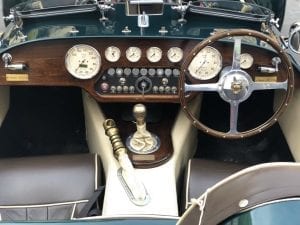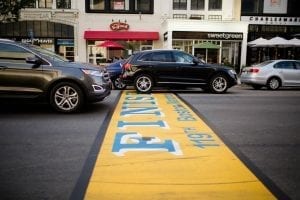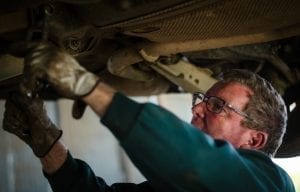There is something deeply satisfying about campfire cooking. The open fire, the smells and flavours that conjure up fond memories of family caravan trips and cosy winter nights. If you’ve been on a long outdoor adventure trip then you know how bland and unimaginative cooking can become… but it doesn’t have to be!
With a simple camp oven, skillet and some basic utensils, there’s no reason why you can’t make some fancy and delicious meals right there on the campfire. When we’re planning meals for a caravan trip we tend to forget that cooking on a campfire really isn’t that different to cooking at home. You still have a clear space to prepare your ingredients, you still have a flame to heat your pots and pans and you can still control the temperature of whatever you’re cooking. In fact, the only real difference is the lack of electricity and no floors to mop!
Below are just a few great cooking recipes for you to try on your next caravanning adventure, make sure you let us know what you think in the comments, we’d love to hear your feedback.
Tropical Fruit Salad
We’ll start with something light and simple, a tasty fruit salad that makes a great alternative to reaching for another bag of chips or another handful of biscuits. The ingredients are entirely up to your personal preference and can be prepared in just a few minutes.
To really complete the look you can serve it in a plastic Champagne flute or similar, found at most camping stores.

Ingredients
700g seedless watermelon
200g seedless grapes
4 kiwifruit, peeled
4 passionfruit
500g pineapple, peeled
500g greek yoghurt
Directions
– Dice watermelon, grapes, rockmelon, kiwifruit and pineapple
– Place grapes in the bottom of each flute
– Layer pineapple and kiwifruit on top of the grapes
– Place 1 heaped tablespoon of Greek yoghurt on top
– Layer strawberries and watermelon on top
– Top it off with 1 table spoon of passionfruit and Greek yoghurt
Vegetable Jalfrezi
This recipe is a slight variation on Jamie Oliver’s Jalfrezi recipe. This hearty curry recipe is incredibly simple to make and works with practically any combination of vegetables so go ahead and experiment.
You will need to do some extra planning to make sure you have all the spices and ingredients for this recipe, and it’s a slow cooking time of 60 – 90 minutes but its well worth the effort, and the aroma is amazing!

Ingredients
1 medium brown onion
1 red chilli
1 medium piece of fresh root ginger
2 cloves of garlic
1 small bunch of fresh coriander
2 red capsicum
1 cauliflower
3 ripe tomatoes
1 small butternut squash
400g tinned chickpeas
Vegetable oil
1 knob butter
½ 283g jar of Patak’s Jalfrezi curry paste
2 x 400g tinned chopped tomatoes
4 tablespoons balsamic vinegar
sea salt
ground black pepper
2 lemons
200g natural yoghurt
Directions
Preparation
– Peel and dice onion
– Finely slice chilli
– Peel and finely slice ginger and garlic
– Pick coriander leaves and finely chop stalks
– Deseed and roughly chop capsicum
– Break cauliflower into florets and roughly chop
– Quarter tomatoes
– Halve butternut squash and remove seeds with a spoon
– Slice squash into inch-size wedges
– Remove any thick skin from squash, then dice
– Drain chickpeas
Cooking
– Place camp oven on the rack over a small-medium flame (“medium heat”)
– Add butter and ~ 2 tablespoons of butter
– Add onions, chilli, ginger, garlic, and coriander stalks and cook for around 10 minutes or until softened
– Add capsicum, squash, chickpeas and curry paste and stir well
– Add cauliflower, tinned tomatoes and balsamic vinegar
– Fill tin with water and pour over ingredients and stir
– Place lid on your camp oven and bring to the boil, simmering for around 45 minutes
– If curry is too watery after 30 minutes, leave the lid off for the remainder
– Once vegetables have softened, season to taste and add a squeeze of lemon juice
– Scoop into bowl and add a couple of spoonfuls of Greek yoghurt, lemon wedge and coriander to serve
Cast Iron Skillet Brownies
Finally, we’re going to finish off with a decadent dessert for those with a sweet tooth. Despite the name, this is another recipe we have adapted (the original and image is from Simple Food Love) to work without a regular oven. These “Skillet Brownies” will be cooked in a camp oven instead.
The end result is a moist, delicious brownie that is sure to please even the fussiest eater. The hardest part about this recipe is being patient while it cooks!

Ingredients
– 1 cup of sugar
– 3 large eggs
– 1 cup of all-purpose flour
– ½ cup of Dutch-processed cocoa powder
– ½ teaspoon of salt
– ½ stick of unsalted butter
– ¼ cup of heavy cream
– 1 packet of chocolate chips
Directions
– Place camp oven on the rack over a small-medium flame (“medium heat”) with the lid on
– Whisk eggs and sugar in a large bowl
– Whisk flour, cocoa and salt in a separate bowl
– Place butter and cream into a small frying pan and place over fire, allowing it to simmer
– Add chocolate to the pan and stir constantly until melted
– Remove pan from the fire and allow to cool for around 5 minutes
– Add melted chocolate to sugar mixture and whisk until blended
– Fold flour mixture into the chocolate mixture to form batter
– Pour batter into your camp oven and place lid back on top
Note: Because precise temperatures can be difficult to control on a camp fire, cooking times will vary. In a regular oven this mixture will cook for around 20 – 25 minutes. In a camp oven, check regularly after the first 10 minutes. Once it has reached your preferred texture, take the oven off the rack and serve immediately.
Your camp oven will retain heat for a long time so the brownie will continue to cook if not removed from the oven.
Keep an eye out for more amazing cooking ideas in our Caravan Blog and be sure to let us know what you think. Share some of your favourite caravanning ideas in the comments below and we may even feature yours in an upcoming post!










